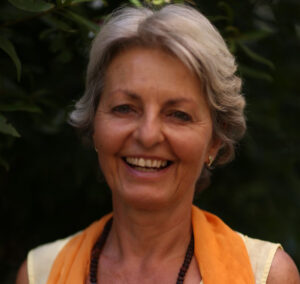Unlocking Your Inner Balance
Have you ever noticed how your emotions seem to take root in your body? A tight jaw when you’re feeling anxious, or heavy shoulders when you’re overwhelmed. These aren’t coincidences; they’re reminders of the deep connection between your body and mind.
This is where kinesiology enters the picture. Kinesiology is a holistic practice that uses the body’s natural energy and physical movement to promote healing and balance. Its unique approach helps address emotional and mental health challenges, offering a pathway to clarity and resilience.
Curious about how kinesiology can support your emotional and mental well-being? Read on as we explore the principles of kinesiology, its connection to emotional balance, and how you can incorporate this powerful practice into your daily life.
Understanding Kinesiology Principles
What Is Kinesiology?
Kinesiology is the study of human movement and the energy that flows through the body. At its core, the practice focuses on identifying energy imbalances that manifest physically and emotionally. Muscle testing is a key technique used to pinpoint these imbalances, acting as a diagnostic tool to uncover stress points or blocked energy.
Practitioners of kinesiology don’t just treat symptoms; they tap into the body’s natural ability to heal itself. By addressing the root causes of physical and emotional stress, kinesiology helps gently restore balance across the body, mind, and spirit.
The Mind-Body Connection
Perhaps one of kinesiology’s most valuable contributions is its recognition of the intricate relationship between emotional states and physical health. Negative emotions such as stress, fear, or sadness can create energetic blockages that weaken the body. Over time, these blockages lead to physical symptoms like tension, fatigue, or even chronic pain.
By highlighting and clearing these blockages, kinesiology fosters not just physical recovery but also emotional release and mental clarity. This makes it a well-rounded tool for emotional and mental health improvement.
Physical Movement and Emotional Balance
Stress Lives in the Body
We often hear phrases like “carrying the weight of the world on your shoulders,” but this is more than just a metaphor. Stress, unresolved emotions, and traumatic experiences often manifest physically in the form of tight muscles, headaches, or digestive issues. Kinesiology helps connect the dots between these physical symptoms and their emotional roots.
For example, someone who consistently experiences shoulder tension might be holding onto unresolved feelings of responsibility or pressure. Through muscle testing and targeted techniques, kinesiology helps release this pent-up emotion, resulting in physical relaxation and emotional freedom.
Why Movement Matters
Movement is a well-known tool for improving emotional health. Activities like walking, stretching, or dancing release endorphins and reduce stress hormones. Kinesiology takes this concept one step further by incorporating muscle testing and energy balancing to identify specific areas where movement is needed most.
Think of it as aligning the body’s emotional and physical “wiring.” When everything is in sync, you feel lighter, more focused, and better equipped to handle life’s challenges.
[Case Study]: One client shared their experience with kinesiology after dealing with chronic anxiety. By releasing tension in the diaphragm and balancing their energy flow, they reported feeling physically lighter and emotionally more grounded in just a few sessions.
Practical Tips for Incorporating Kinesiology into Daily Life
Practices to Try at Home
You don’t need a practitioner to experience some of the benefits of kinesiology. Simple techniques like self-muscle testing can help you understand how your body might be reacting to stress. For example, lightly pressing on a specific muscle while focusing on a stressful situation can help reveal tension points that need attention.
Energy tapping is another easy-to-learn technique. Use your fingertips to tap lightly on energy points, such as the centre of your chest (heart chakra) or the sides of your temples, while taking deep breaths. This helps to release blocked emotions and restore calm.
Daily Energy-Flow Practices
- Start your mornings with gentle stretches to improve circulation and wake up your energy pathways.
- Incorporate mindful breathing exercises throughout the day to centre yourself and maintain emotional balance.
- At the end of the day, reflect on emotional ups and downs and release any lingering tension through guided meditation or yoga.
Pair Kinesiology With Other Wellness Practices
For deeper results, consider combining kinesiology with yoga, meditation, or journaling. These practices work synergistically, helping you process emotions and maintain energy flow over time. For example, after a kinesiology session, you might use journaling to explore any emotional insights that surfaced.
Insights from Practitioners
What Experts Have to Say
[Expert Insight]: We spoke to another certified kinesiologist who emphasised the importance of recognising how emotions disturb physical well-being. They explained, “The body often tells us what the mind doesn’t want to acknowledge. Kinesiology bridges that gap and empowers individuals to manage emotional challenges more effectively.”
Practitioners often highlight the gentle, non-invasive nature of kinesiology, which makes it accessible to individuals of all ages. They also stress the importance of consistency, as regular sessions or practices create incremental yet lasting improvements.
Exploring Kinesiology Further
Finding a Practitioner
If you’re ready to take your emotional and mental well-being to the next level, finding a certified practitioner is a great place to start. Look for someone with experience in emotional health and energy balancing techniques. Before booking, ask about their approach and any success stories they’ve had working with clients like you.
Continue Learning
Dive deeper into kinesiology by exploring books, online courses, and workshops. Many leading practitioners offer free resources or guided sessions to help newcomers understand the practice and its benefits. Organisations like Ease of Life Kinesiology often provide helpful materials and expert-led discussions on the topic.
Reflective Summary
Kinesiology offers far more than just a physical reset. Its holistic approach taps into the underlying connections between your mind, body, and emotions, creating space for healing and growth. By using techniques like muscle testing and energy balancing, kinesiology equips you with tools to release tension, process emotions, and restore harmony within.
Whether you’re looking to reduce stress, process deep-seated emotions, or simply cultivate greater mental clarity, kinesiology can play a pivotal role in your wellness journey. Start today by exploring simple energy-balancing practices or booking your first kinesiology session. Emotional freedom and balance are closer than you think.


